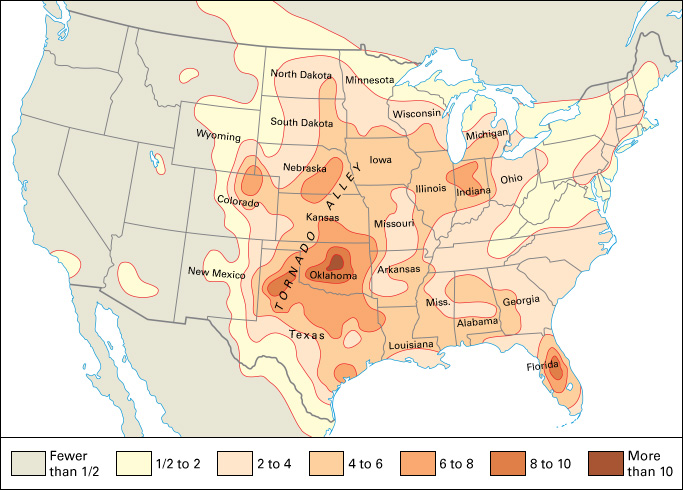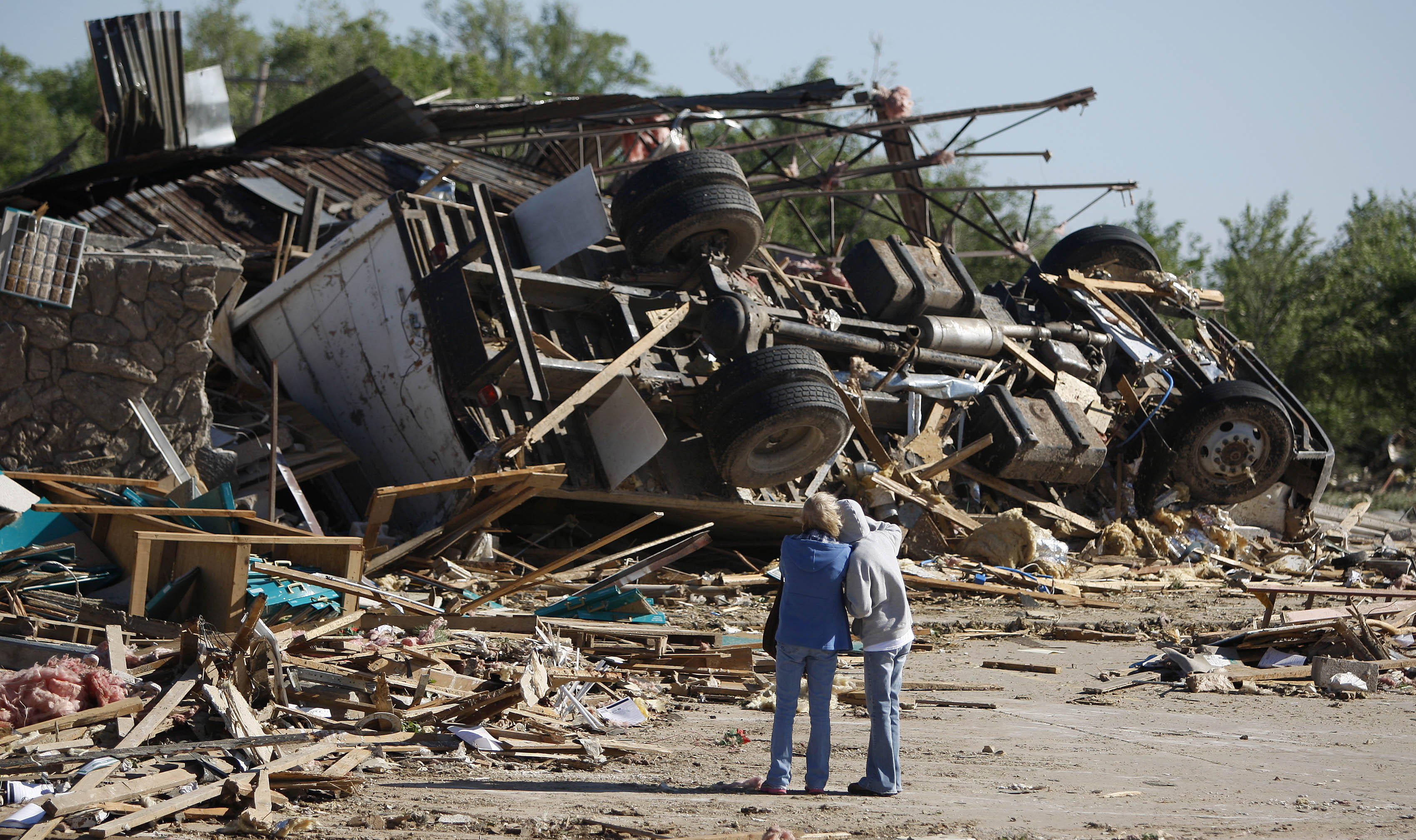Tornado Alley is a region of the United States with more tornadoes on average than anywhere else in the world. Tornado Alley is in the central part of the country. It includes parts of Texas, Oklahoma, Kansas, and Nebraska. The number of tornadoes in this region varies considerably from year to year. But on average, each location in Tornado Alley has at least one tornado pass within 25 miles (40 kilometers) each year. Areas around Tornado Alley, especially just to the east, may also experience many tornadoes in a single year. But the average occurrence of tornadoes there year after year is not as high as in Tornado Alley.

The relatively high risk of tornadoes over the central United States relates to the region’s topography and prevailing winds. Topography is the shape of the land. A prevailing wind is a wind pattern that remains constant over time.

The land in the central United States is relatively flat. As winds move across it, they encounter few obstacles such as mountains, high hills, or large forests.
Winds aloft (higher in the atmosphere) in the central United States generally move from west to east. Another prevailing wind blows from the Gulf of Mexico toward the central United States. This prevailing wind is closer to the ground than the prevailing west to east wind.

When winds from the southeast blow under the loftier winds from the west, the difference in wind speed, altitude, and direction produces a swirling wind pattern called wind shear. Wind shear powers the rotation of supercell storms. Supercell storms are powerful thunderstorms that produce the strongest tornadoes.
The formation of a supercell requires relatively warm and moist air at the surface and much colder air higher up. The prevailing wind from the southeast pulls warm, moist air from the Gulf of Mexico up through the Great Plains and the Mississippi Valley. Disturbances in the stream of westerly wind harbor pockets of relatively cold air. The cold air aloft and warm air below allow thunderstorms to be triggered when air near the ground is heated or lifted. Some of these storms develop into supercells, which may spawn many tornadoes.
See also Tornado .
